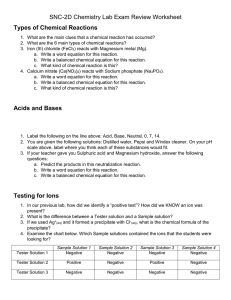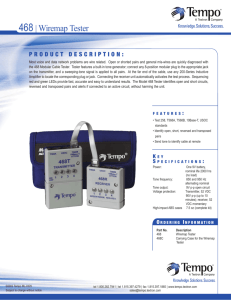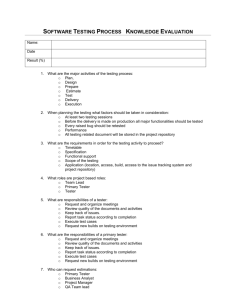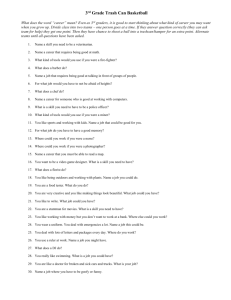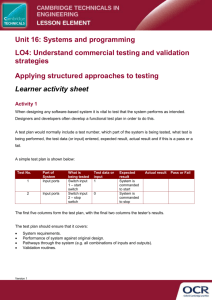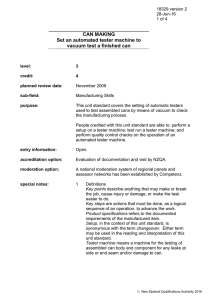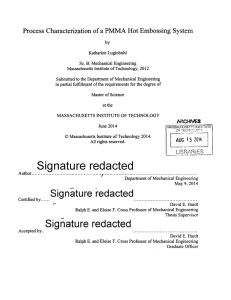EE411 Lesson 7: Testing
advertisement
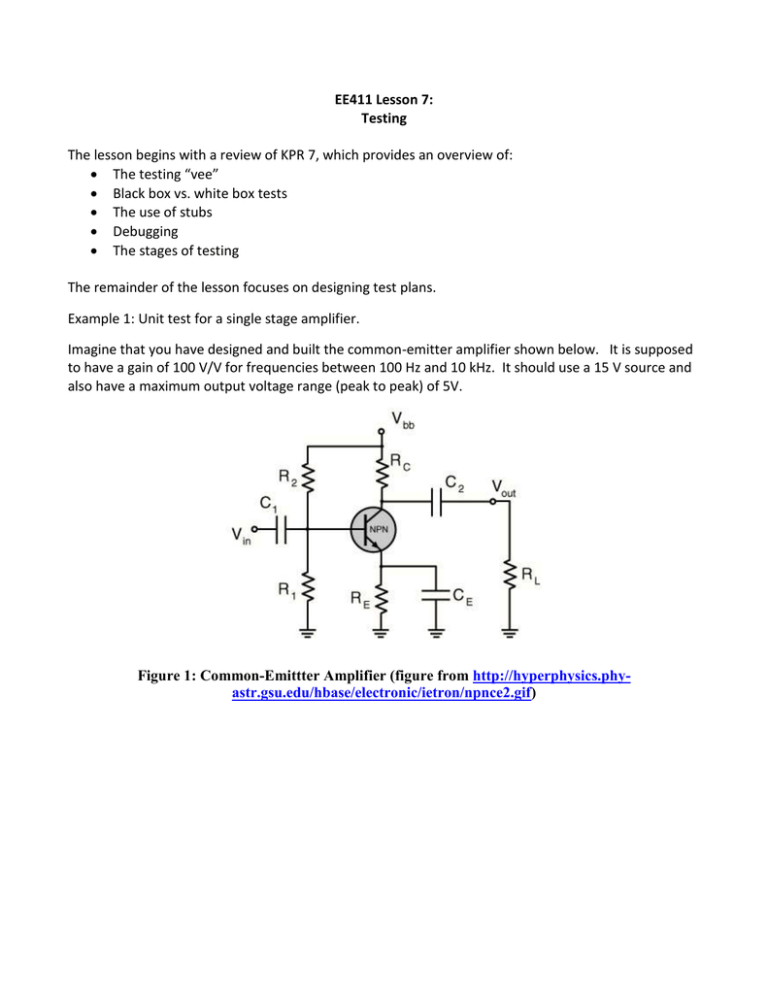
EE411 Lesson 7: Testing The lesson begins with a review of KPR 7, which provides an overview of: The testing “vee” Black box vs. white box tests The use of stubs Debugging The stages of testing The remainder of the lesson focuses on designing test plans. Example 1: Unit test for a single stage amplifier. Imagine that you have designed and built the common-emitter amplifier shown below. It is supposed to have a gain of 100 V/V for frequencies between 100 Hz and 10 kHz. It should use a 15 V source and also have a maximum output voltage range (peak to peak) of 5V. Figure 1: Common-Emittter Amplifier (figure from http://hyperphysics.phyastr.gsu.edu/hbase/electronic/ietron/npnce2.gif) Design a testing protocol for this system, using the format given below: Test Writer: EE411 Class Test Case Name: BJT amplifier unit test example Description Tester Information: Name of Tester: Hardware Version: Setup Instructions: Step Action 1 2 3 4 5 6 Test ID#: Type: Date: Time: Expected Result P F N/A Comments □ white box □ black box Example 2: Integration Test for 3/C Robot A long, long time ago, in a classroom not too far away, you built a robot that could follow a line. This example takes us back to this exercise. You had a robot with a differential drive (i.e. it had two motorized wheels, each with its own motor, and a third roller for stability), and with an Altera chip for a brain. The chip received input signals from 3 light sensors (you designed and built the signal conditioning circuits for each of the sensors), and then used information from those sensors to determine the control signals for the motors. (You also built the circuits that amplified those control signals in order to drive the motors). Assume that you have built and tested the sensor circuits, and that you have programmed the Altera chip. Design the Integration Test for the sensor:Altera interface. Test Writer: EE411 Class Test Case Name: Robot Integration Test Example Description Tester Information: Name of Tester: Hardware Version: Setup Instructions: Step Action 1 2 3 4 5 6 Test ID#: Type: Date: Time: Expected Result P F N/A Comments □ white box □ black box Example 3: Acceptance Test for your Capstone Acceptance tests are tightly coupled to the engineering requirements. Select one engineering requirement for your capstone project, and design an acceptance test that verifies that requirement. Test Writer: Test Case Name: Description Tester Information: Name of Tester: Hardware Version: Setup Instructions: Step Action 1 2 3 4 5 6 Test ID#: Type: Date: Time: Expected Result P F N/A Comments □ white box □ black box
